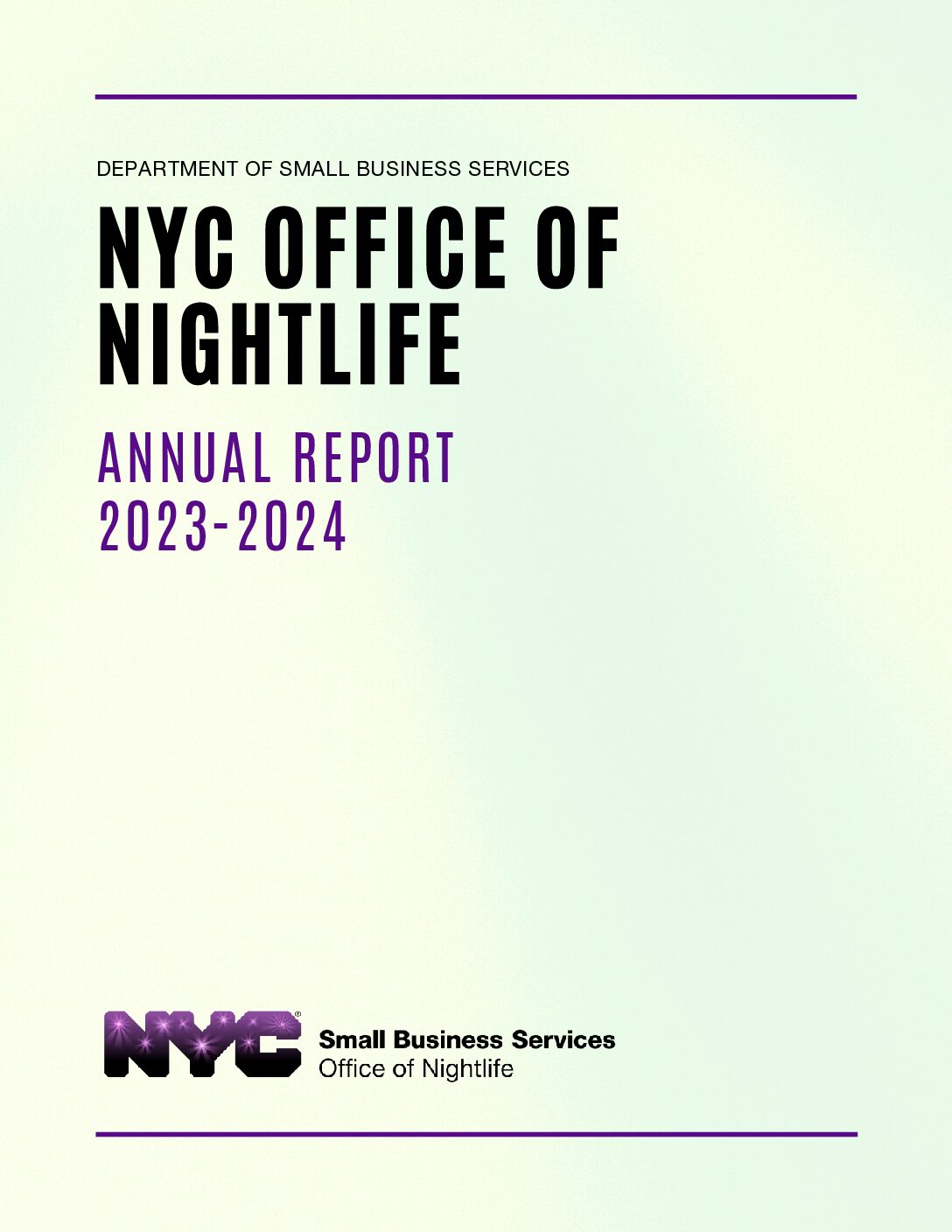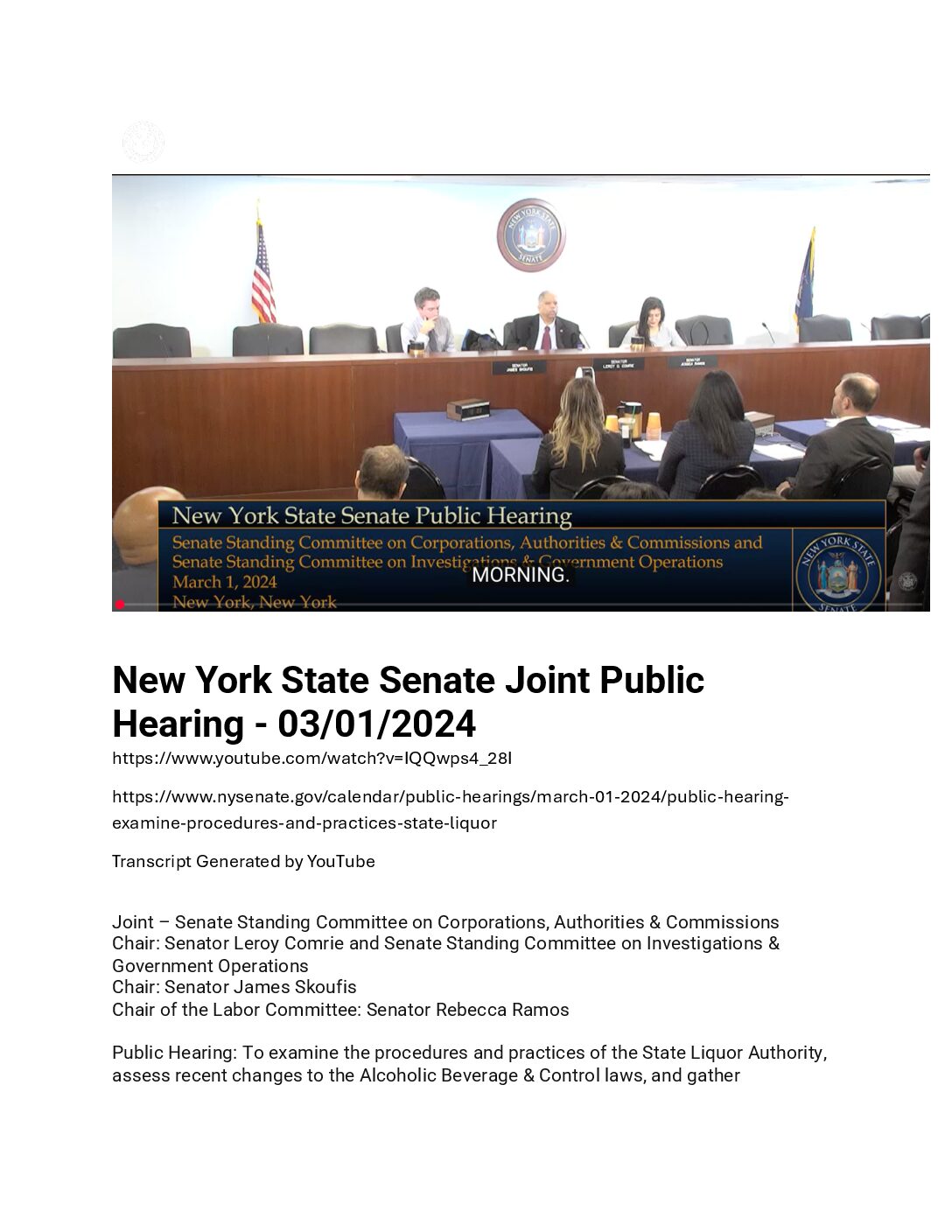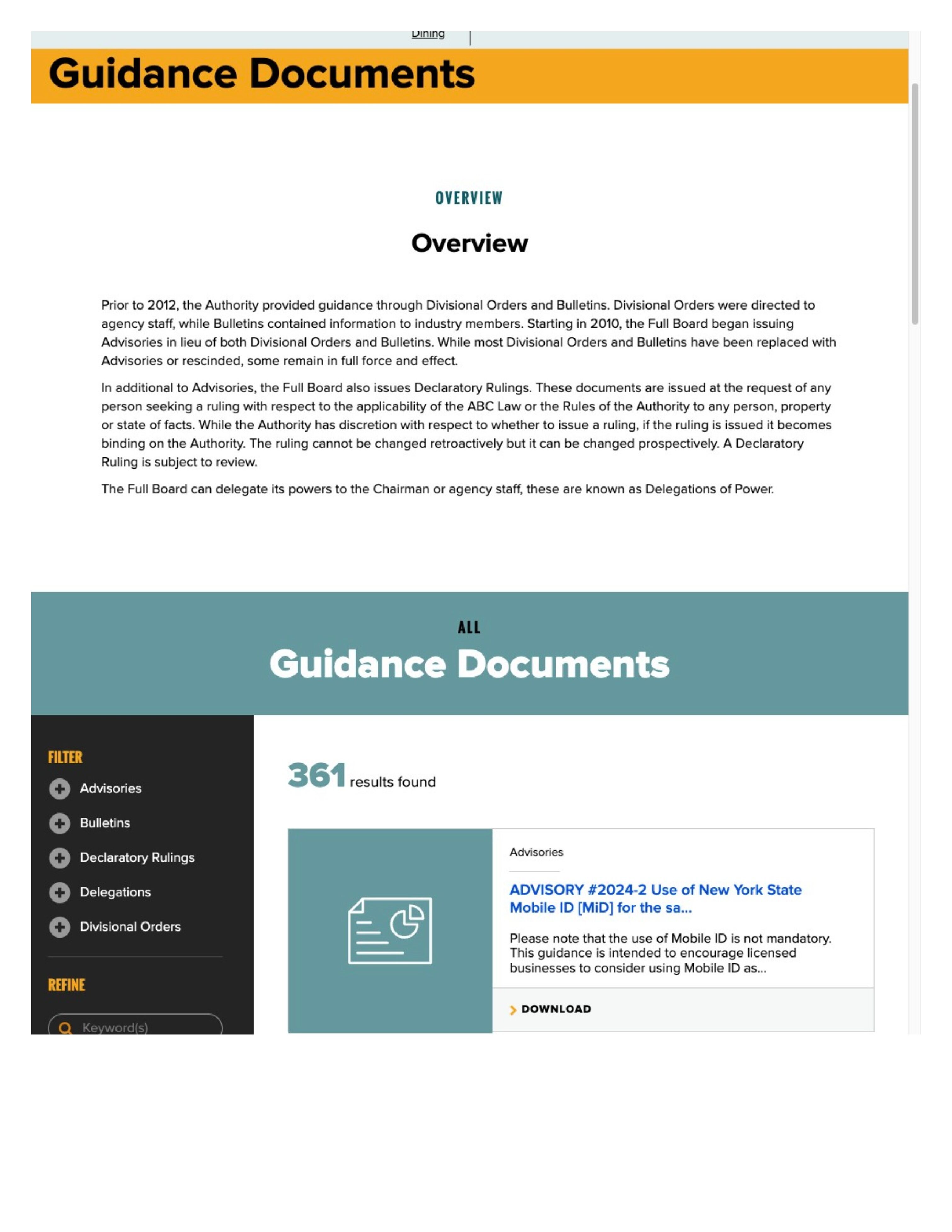The Office of Nightlife 2023-2024 report mentioned but did not analyze the impact of regulation by the SLA of live music and dancing and the impact of community board stipulations.
Document Category: State Liquor Authority (SLA)
Letters to SLA Chairs
Letters 2022-2025 to SLA Chairs Bradley and Chan
Alcoholic Beverage Control Law Section 64
New York Consolidated Laws, Alcoholic Beverage Control Law – ABC § 64. License to sell liquor at retail for consumption on the premises with 500 Foot Law.
500 Foot Law Alcoholic Beverage Control Law Section 64
The 500 Foot Law ABC § 64 in practice creates barriers to obtaining an on-Premises license without an optional time consuming hearing by the SLA Board, absent Community Board Approval.
§ 64-a of Alcoholic Beverage Control Law – Factors to Consider in Granting Liquor License
Factors that may be considered by SLA in granting liquor licenses do not include whether there will be patron dancing, live music, or amplified music
License Applicants Agree to Community Board Demands to Avoid Months of Delay from SLA- NYT
License Applicants May Submit to Unreasonable Community Board Demands to Avoid Months of Delay in Obtaining Licenses:
Letter to SLA Chair re Removal of Method of Operation Information from License Database
Letter Dec. 7 2024 to SLA Chair as to why the SLA stopped providing Method of Operation information in its public on-line databases.
3-13-2025 Full SLA Board Meeting
The full March 13, 2025 Board Meeting YouTube hearing and auto-generated tracscripts provides a window into the day-to-day operation of the State Liquor Authority.
March 1, 2024 New York Senate Standing Comittees on Corporations, Authorities & Commissions and Investigations & Government Operations
Public Hearing March 1, 2024: To examine the procedures and practices of the State Liquor Authority, assess recent changes to the Alcoholic Beverage & Control laws, and gather recommendations to improve the efficiency, responsiveness and transparency of the SLA to businesses across the state.
SLA Rule-Making – Regulations at 9-NYCEE and By Advisories
In our view, the acceptable practice is for adminstrative agencies to make rules in the form of a rule making procedure with prior notice and for rules to be promulgated in a regular organized manner as the agencies rules and procedures. The SLA departs from this method and rather seems to make rules in the form of advisories which are irregularly indexed.







